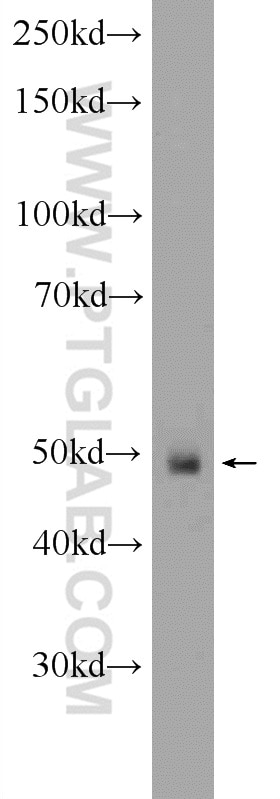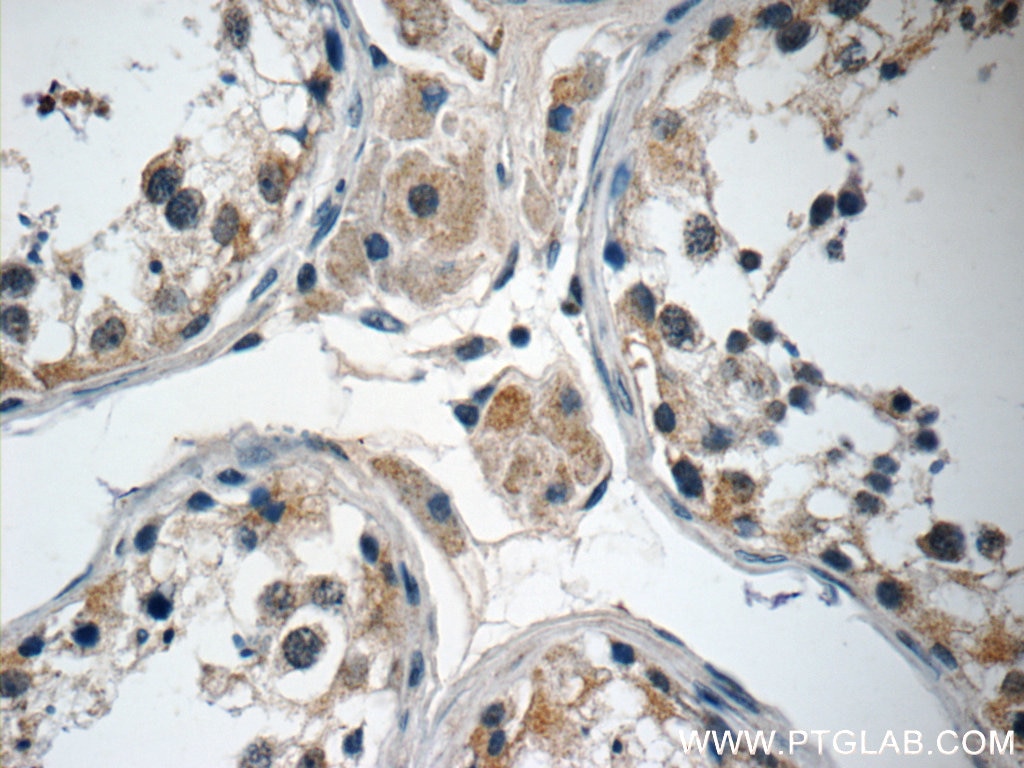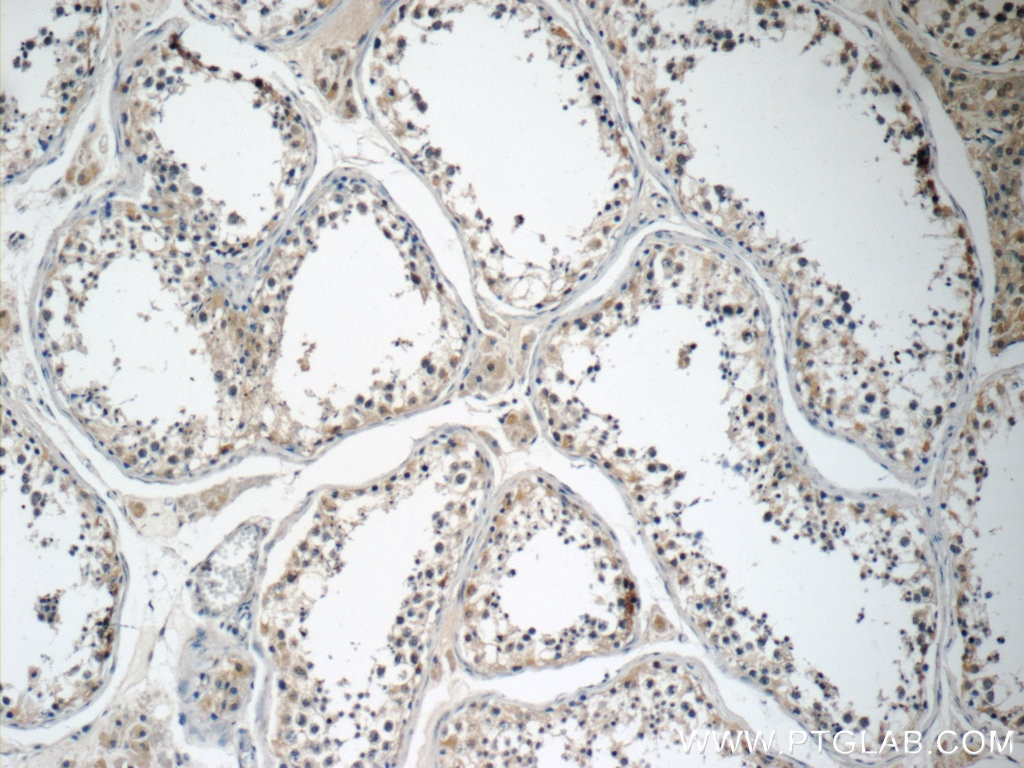ANKRD33 Polyklonaler Antikörper
ANKRD33 Polyklonal Antikörper für IHC, WB,ELISA
Wirt / Isotyp
Kaninchen / IgG
Getestete Reaktivität
human
Anwendung
WB, IHC,ELISA
Konjugation
Unkonjugiert
Kat-Nr. : 25202-1-AP
Synonyme
Galerie der Validierungsdaten
Geprüfte Anwendungen
| Erfolgreiche Detektion in WB | Y79-Zellen |
| Erfolgreiche Detektion in IHC | humanes Hodengewebe Hinweis: Antigendemaskierung mit TE-Puffer pH 9,0 empfohlen. (*) Wahlweise kann die Antigendemaskierung auch mit Citratpuffer pH 6,0 erfolgen. |
Empfohlene Verdünnung
| Anwendung | Verdünnung |
|---|---|
| Western Blot (WB) | WB : 1:500-1:1000 |
| Immunhistochemie (IHC) | IHC : 1:20-1:200 |
| It is recommended that this reagent should be titrated in each testing system to obtain optimal results. | |
| Sample-dependent, check data in validation data gallery | |
Produktinformation
25202-1-AP bindet in WB, IHC,ELISA ANKRD33 und zeigt Reaktivität mit human
| Getestete Reaktivität | human |
| Wirt / Isotyp | Kaninchen / IgG |
| Klonalität | Polyklonal |
| Typ | Antikörper |
| Immunogen | ANKRD33 fusion protein Ag18582 |
| Vollständiger Name | ankyrin repeat domain 33 |
| Berechnetes Molekulargewicht | 452 aa, 49 kDa |
| Beobachtetes Molekulargewicht | 49 kDa |
| GenBank-Zugangsnummer | BC121153 |
| Gene symbol | ANKRD33 |
| Gene ID (NCBI) | 341405 |
| Konjugation | Unkonjugiert |
| Form | Liquid |
| Reinigungsmethode | Antigen-Affinitätsreinigung |
| Lagerungspuffer | PBS mit 0.02% Natriumazid und 50% Glycerin pH 7.3. |
| Lagerungsbedingungen | Bei -20°C lagern. Nach dem Versand ein Jahr lang stabil Aliquotieren ist bei -20oC Lagerung nicht notwendig. 20ul Größen enthalten 0,1% BSA. |
Hintergrundinformationen
Ankyrin repeat domain 33 (ANKRD33), also named as C12orf7, belongs to the ankyrin repeat family and is highly expressed in retina. ANKRD33 exists as two isoforms. The isoform 1 molecular weight is 29kDa and isoform 2 is 49kDa. The function of ANKRD33 is still non-known.
Protokolle
| Produktspezifische Protokolle | |
|---|---|
| WB protocol for ANKRD33 antibody 25202-1-AP | Protokoll herunterladen |
| IHC protocol for ANKRD33 antibody 25202-1-AP | Protokoll herunterladen |
| Standard-Protokolle | |
|---|---|
| Klicken Sie hier, um unsere Standardprotokolle anzuzeigen |




